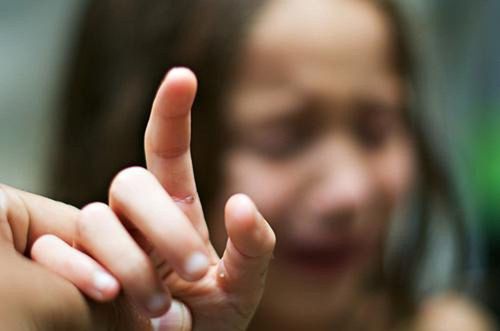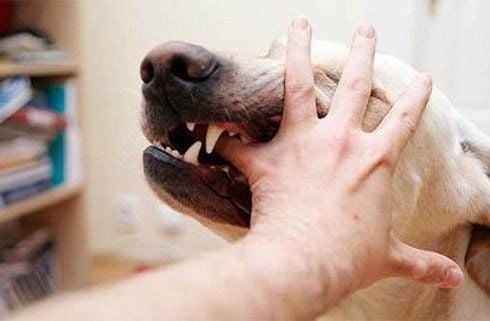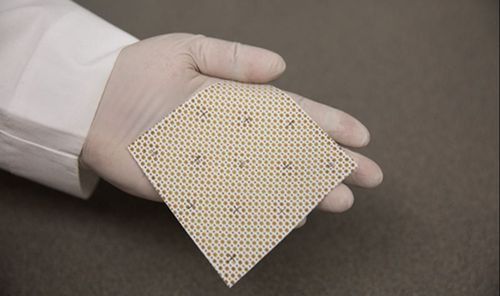This is an automatically translated article.
Children can get minor injuries on their bodies when they play, or during other activities. Most of these injuries can be treated at home with simple first aid. So how to take care of a child's bandaged wound to ensure safety and avoid infection? This article will provide helpful information to help caregivers understand some basic bandaged wound care.
Small cuts and scrapes are always associated with your child's childhood. But that's part of a child's growing up journey, and it's also an experience for them to learn for themselves to feel pain and to learn reflexes to stay away from things that have hurt them. As a parent, you should not control your child, but let him or her explore the world around within safe limits; What you should know is how to clean and care for small wounds yourself or give first aid for large wounds before taking your child to the doctor.
1. Causes of cuts and scratches in children
Skin abrasions caused by skin rubbing on rough or smooth surfaces; Wounds and lacerations caused by accidents and impacts; Incisions made by sharp objects such as sharp knives, scissors, sharp glass... An incision can be life-threatening if it involves vital organs, blood vessels or nerves; Stab wounds caused by thin sharp points such as needles, animal teeth...

Trẻ em rất dễ bị va vấp, trầy xước
2. First aid for cuts and scratches
Help your child calm down, and encourage him that you can handle it; Apply with a clean cloth or bandage for a few minutes to stop bleeding. For heavy bleeding, it is necessary to stop the bleeding quickly by applying pressure to the wound with a clean towel and holding it for 5 to 10 minutes. Don't stop to look at the cut. If the cloth is soaked with blood, place a new cloth over the old one. Do not lift the first cloth. If possible, keep the child's wound above the child's heart; Wash your hands with soap or a quick hand sanitizer, if possible, or wear gloves; Wash the injured area thoroughly with soap and water (ideally, with 0.9 % Nacl solution). Do not scrub the wound. Remove any dirt particles from the injured area. If there is a deep-rooted foreign body, you should not arbitrarily pull it out, but wrap a cloth towel around the object and take the child to the nearest medical facility. Leave the wound under running water for a few minutes. Dirty cuts or scrapes that are not thoroughly cleaned can cause scarring or infection. Antibiotic ointments can be applied to the wound, antibacterial ointments reduce the risk of infection and help keep the wound moist, and the dressing does not stick. But make sure your child is not allergic to that topical antibiotic.
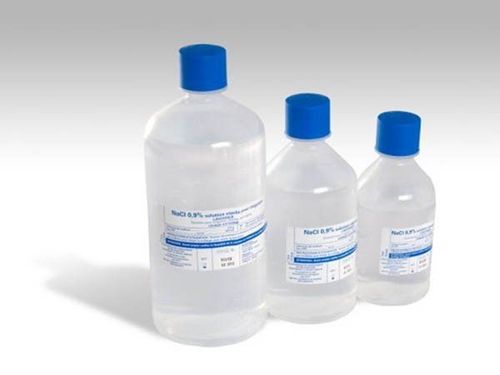
Rửa vết thương cho trẻ bằng nước muối sinh lý
Cover the affected area with tape or gauze if the area is on a hand or foot, or if it is likely to leak fluid. If you have to bandage, do not tie too tightly to obstruct blood circulation. Change the dressing regularly with 0.9 % physiological saline and Betadine antiseptic solution. Check this wound every day and keep it clean and dry. If the wound is already dry, leave it open or cover with a thin cloth to help the wound heal faster. Do not blow on cuts or scrapes. This can cause germs to grow. *Note: Avoid putting bandages on babies and toddlers where they can take them off and put them in their mouths. Instead, you can wrap a finger in gauze, or even leave a small cut or scrape without a bandage instead of suffocating your child.
3. Soothe the pain
You can distract your child's pain by telling her a favorite story, comforting her a little, or letting her sleep quietly. If that doesn't work, give your child paracetamol or ibuprofen in small doses. However, you should not self-diagnose and give the child any medicine, it is necessary to consult a doctor. Never give aspirin to a child because it can cause Reye's syndrome (a rare condition that causes swelling in the liver and brain).
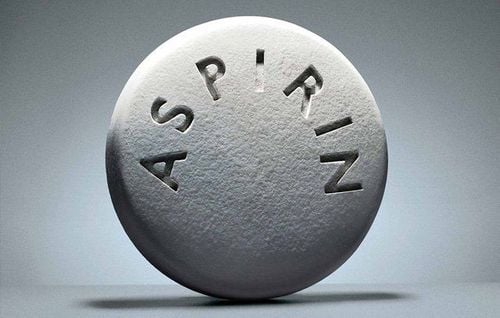
Ba mẹ tuyệt đối không cho trẻ uống aspirin
4. Take the child to a medical facility as soon as possible
Heavy bleeding and not stopping bleeding after 5 to 10 minutes of direct pressure; Wounds on the face; Serious trauma to the area near the head, head, neck, scrotum, chest, abdomen or severed limb; The wound is so deep that you can see muscle or bone; Wounds caused by punctured sharp objects, or rusty dirty objects; The wound has debris, such as dirt, glass, stones, or gravel; Something is stuck in the wound and you can't get it out; Cut by an animal or human bite - these injuries require special treatment; Causing excruciating pain; signs of infection, such as warmth, redness, swelling, or oozing; Your child has not had a tetanus shot in the last 5 years, or if you are not sure when your child received their last tetanus shot.
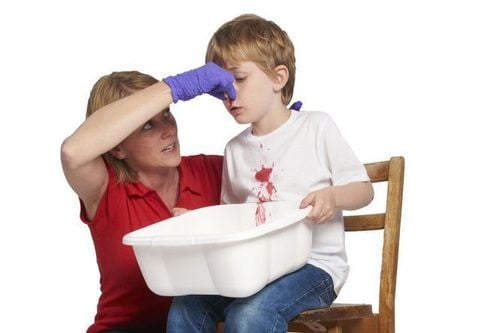
Nếu vết thương chảy máu không cầm được, trẻ cần ngay lập tức được đưa đến bệnh viện
5. When does a wound need stitches?
Large cuts to the face, (all cuts to the face can leave scars) and areas that stretch or stretch with movement, such as the palms of the hands and fingers; Deep or more than 1 cm long, the wound should be sutured; Wounds are serrated or have separate edges. For best results, stitches should be applied no later than 8 hours after the injury, to avoid the risk of infection and to prevent scarring.
6. Preventing children's injuries
Children's playground should be flat, non-slip; Windows, corridors and stairs must have handrails and balustrades; Keep out of reach of children things that can cause injury such as knives, scissors, sharp objects, glass table edges, fragile items...; Around the tree, there should be a barrier to prevent children from climbing; Always keep an eye on the child; For older children, please educate the awareness when participating in traffic, or when playing, do not push or fight.
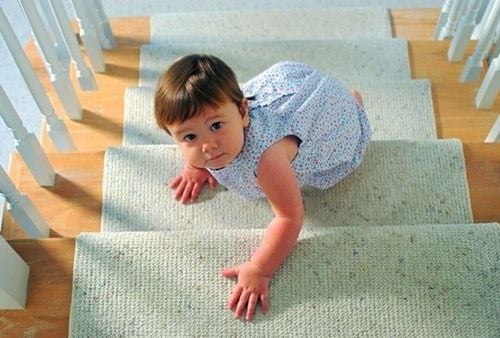
Không cho trẻ nhỏ leo trèo cầu thang để tránh gây nguy hiểm
7. Nutritional care when children have wounds that need to be bandaged
7.1 Foods to eat
Foods containing a lot of protein such as meat, fish eggs, shrimp .... and legumes promote the healing process of wounds. Supplementing with foods rich in iron, vitamin B12, folic acid... such as liver, eggs, milk, helps promote blood formation. Dark green vegetables and fresh fruits such as papaya, oranges, tangerines, dragon fruit, grapefruit... provide vitamins B, vitamin A, vitamin E, vitamin C to help heal wounds and enhance strength. resistance. Fish, poultry, clams, oysters, and whole grains are also high in selenium and rich in zinc, which helps heal wounds and fight infections.

Tăng cường thực phẩm giàu acid folic cho trẻ
7.2 Foods that should not be eaten
Do not eat water spinach and may cause keloids; Do not eat seafood because it can cause allergies; Limit beef because it can leave deep scars. In case the child is seriously injured, you should bandage the baby and take him to a medical facility for timely examination and treatment by specialists. As a key area of Vinmec Health System, Pediatrics Department - Vinmec International General Hospital always brings satisfaction to customers and is highly appreciated by industry experts thanks to the following advantages:
Gathering a team of leading doctors and nurses in pediatrics: including leading experts, highly qualified (professors, associate professors, doctorates, masters), experienced, worked in hospitals as big as Bach Mai, 108.. The doctors are all well-trained, professional, have a mind - range, and understand young psychology. In addition to domestic pediatric specialists, the Department of Pediatrics also has the participation of foreign experts (Japan, Singapore, Australia, USA) who are always pioneers in applying the latest and most effective treatment regimens. . Comprehensive services: In the field of Pediatrics, Vinmec provides a series of continuous medical examination and treatment services from Newborn to Pediatric and Vaccine,... according to international standards to help parents take care of their baby's health from birth to childhood. from birth to adulthood Specialized techniques: Vinmec has successfully deployed many specialized techniques to make the treatment of difficult diseases in Pediatrics more effective: neurosurgery - skull surgery, stem cell transplantation. blood in cancer treatment. Professional care: In addition to understanding children's psychology, Vinmec also pays special attention to the children's play space, helping them to have fun and get used to the hospital's environment, cooperate in treatment, improve the efficiency of medical treatment.
Please dial HOTLINE for more information or register for an appointment HERE. Download MyVinmec app to make appointments faster and to manage your bookings easily.
References: babycenter.com, parenting.firstcry.com, stanfordchildrens.org





